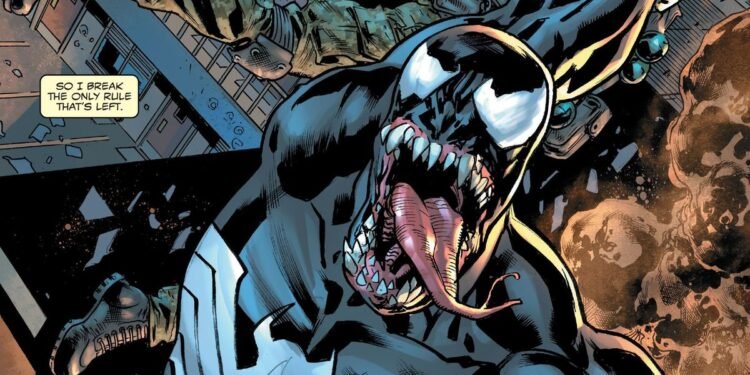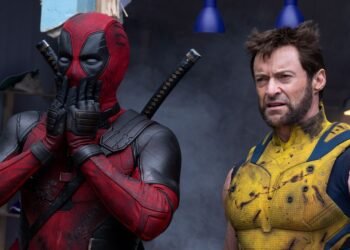Venom is back … again! Following the conclusion of Donny Cates and Ryan Stegman’s critically and commercially successful years-in-the-making Venom run, the eponymous symbiote and its human suitors, Eddie Brock and his son Dylan, are here to snack on heads and smack bad guys around in an all new #1.
The big change this time around? In sharp contrast to the typical Marvel relaunch, everything that happened beforehand seems to have really mattered.
Who’s working on Venom #1?
In a rare move for a Marvel comic, two writers are splitting scripting duties. Al Ewing, writer of Guardians of the Galaxy and the recently concluded Immortal Hulk is said to be tackling the cosmic-in-scope Eddie Brock bits, while writer Ram V — who helmed one of this year’s best comics in The Many Deaths of Laila Starr — is writing the more grounded angst-driven Dylan Brock.
Despite the split perspective, artist Bryan Hitch is drawing the whole thing, joined by Andrew Currie’s inks and Alex Sinclair’s colorwork.
What’s Venom #1 about?
Following the conclusion of the previous Venom run by what seems like a few weeks or months at best, this new story is a continuation of its characters’ arcs, not a “back to basics” reimagining or dramatic restart.
Eddie Brock has accepted the mantle of King in Black, a title that was previously held by the eldritch cosmic evil, Knull. Burdened with new responsibility, including control over every symbiote in the universe, Eddie is spending most of his days projecting his mind into symbiotes out in space, saving lives around the universe. Until, that is, he encounters “Bedlam,” an unknown but apparently quite powerful entity that introduces itself in a genuinely scary sequence. (A note for continuity keepers: This almost certainly is not the mutant-also-known-as-Bedlam played by Terry Crews in Deadpool 2 but hey, who’s to say.)
Meanwhile, teenage Dylan is seen struggling through day-to-day human life on Earth in the shadow of an absentee father, his outcast status at school, and a striking lack of friends who aren’t goo-aliens. He spends his days with the Venom symbiote and its most recently introduced child, Sleeper, who takes on the form of a sleek Siamese cat whose mother was a pokémon. It’s kind of the typical angsty teenager story, at least by way of cosmic calamity.
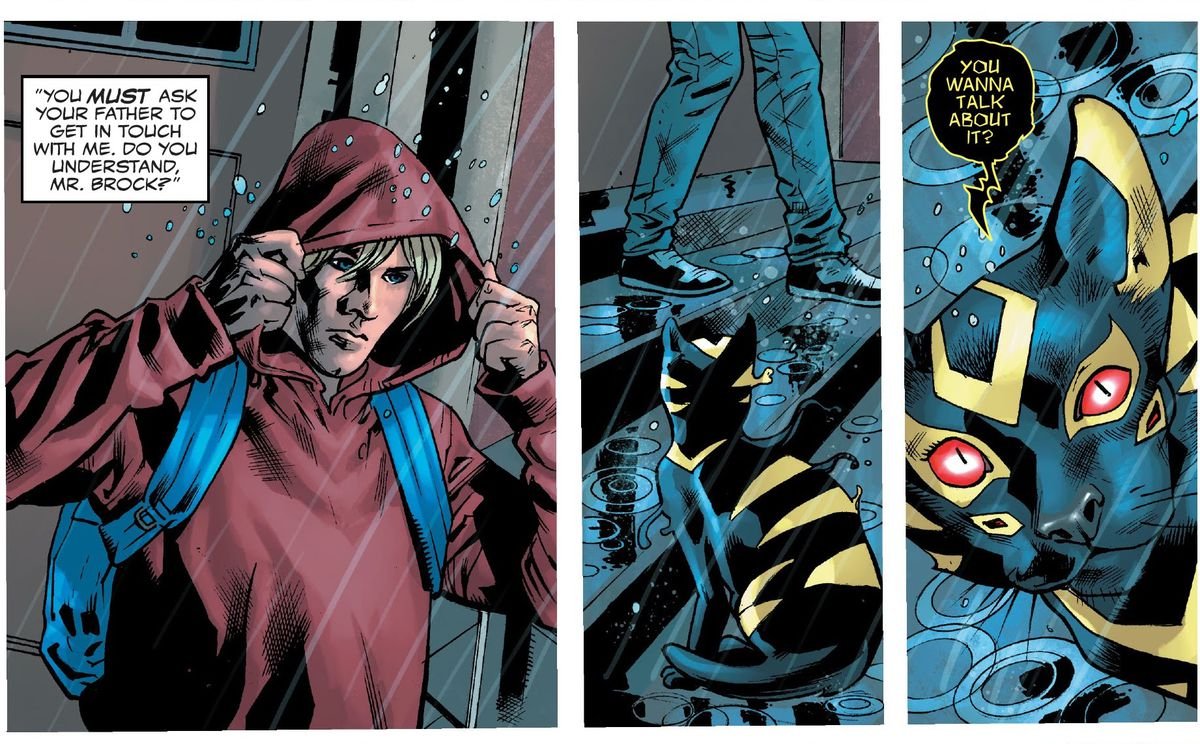
Image: Al Eweing, Ram V, Bryan Hitch/Marvel Comics
Venom #1 is picking up the torch of what came before, but also using it to light a new path.
So then why start the series over at #1 at all?
Because Donny Cates and Ryan Stegman wanted to do new things and a conveniently timed new Venom movie was coming out, of course.
But more seriously, this gets the relaunch treatment because Ewing and V are using it as an introduction to the next chapter of Eddie and Dylan’s lives. The story is about synthesizing old stories and new ones into one overarching narrative — and if the gradual transition of the character’s lives into a new phase happens to be in parallel with a real-world creative changeover, well, it works quite well.
Ewing seems interested in pursuing the cosmic significance of Eddie’s godhood, and it’s clear that he has far reaching plans for new god-worthy foes of the disgraced reporter. V flexes his control over the mundane, using simple mannerisms and grounded storytelling to make the scope of Dylan’s story seem just as important to Eddie’s. The kid has been warned not to bond with the Venom symbiote for his own safety, but by the issue’s end he’s confronting the idea of wanting to do and be more than he’s allowed to — much like his own father famously was before him.
It’s a cool, considered mix that wouldn’t have worked quite as well without a notable change in publishing status.
Is there any required reading?
Although the strained father-son dynamic is pretty clearly the main point here, readers would probably be best off knowing the general context of Donny Cates’ preceding Venom run. That series explored the creation of the Symbiotes under their grudge-holding god, the aforementioned Knull. More importantly, it covered Knull’s defeat at the hands of Eddie Brock and Dylan, who had special Symbiote sensing powers before they were snatched away from him, in the conclusion of the multiple-series-spanning King in Black event (imagine that!).
Cates also introduced a series of retcons which better contextualize the slimy soldier race in the larger Marvel universe, specifically through the revelation that new symbiotes (like Carnage and Toxin, among countless others) are born in response to cosmically important changes or crises, and that they leave a DNA maker called a Codex embedded in the spine of anyone they’ve ever bonded with. And, thanks to several Venom-themed events that have gone before, that includes the likes of the Avengers, the X-Men, and scores more.
Is Venom #1 good?
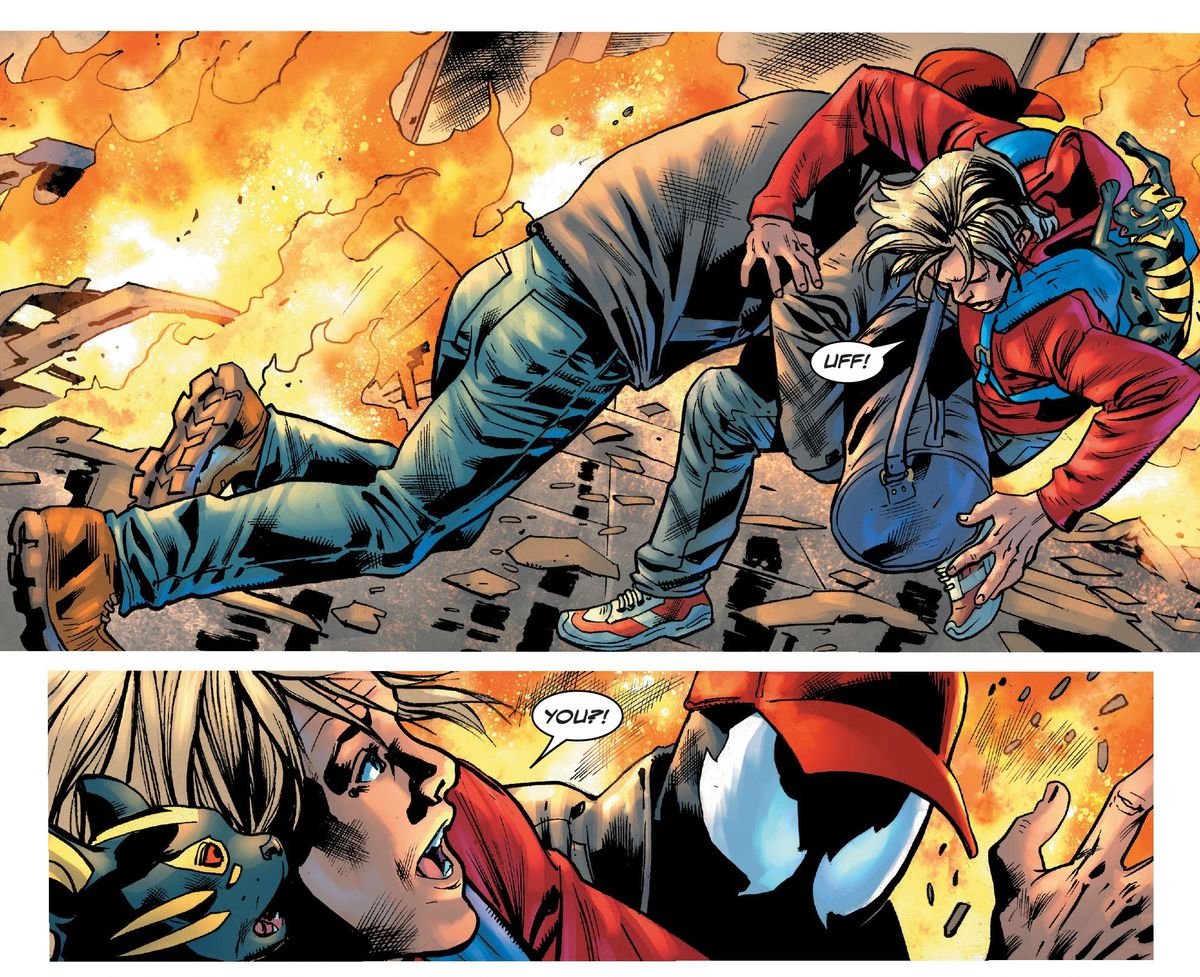
Image: Al Ewing, Ram V, Bryan Hitch/Marvel Comics
What Venom does well — taking the previous story to its natural conclusions and continuations — it does very well. Readers like myself are justifiably tired of always dealing with the upheaval of their favorite character’s lives every time a new book launches, and the creative team here is distinctly and thankfully not interested in doing that. There’s quite a bit of cosmic intrigue introduced, and the appearance of a villain that seems to be completely unconnected to anything either hero knows is a nice touch. It’s also exceptionally cool to see Dylan become a character in his own right, rather than the plot device he was on introduction.
What this issue lacks, however, is a unified direction. Hitch’s art is ultimately unimpressive (the splash introducing “Bedlam” is very visually flat) but sufficient (read: I like the bit where the Venom symbiote wears a baseball cap and khakis). It is arguably there to be exactly that, provide a unified perspective for Dylan and Eddie’s stories, but it never really overcomes the book’s structural unevenness. The distance between the main characters’ voices, the constantly changing tone of the narration, and the general kind of miss at highlighting Eddie’s own struggles — as he has always been defined by his own struggles — in favor of emphasizing Dylan’s … It all leaves a bit to be desired.
That said, there simply had to be a lot of setup here and it’s highly likely that Ewing and V will hit a more natural stride soon. Either way, the experimentation of two writing partners telling a story about a hero who is, himself, two partners, is too interesting to be missed out on.
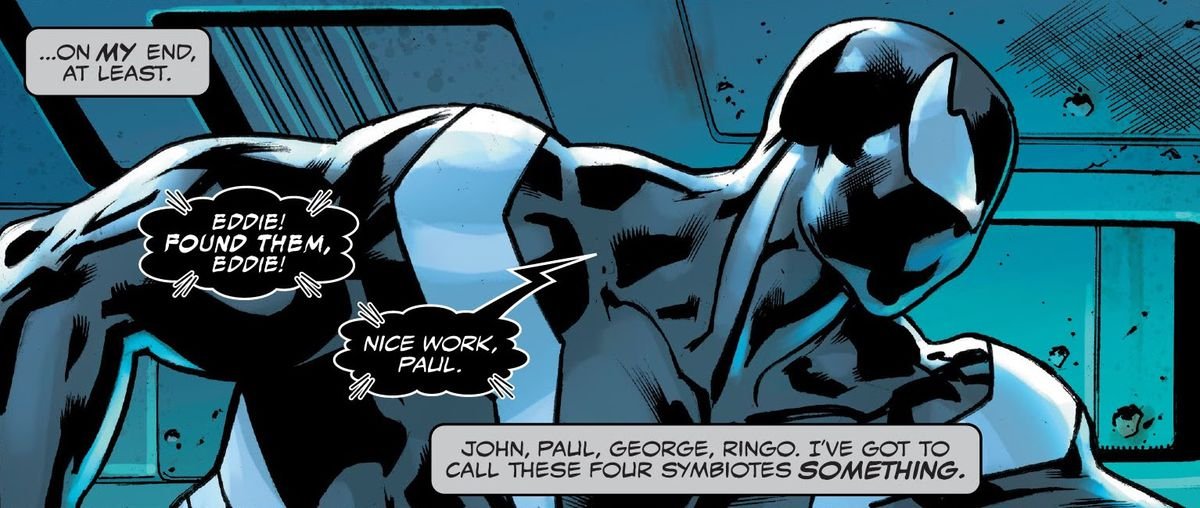
Image: Al Ewing, Ram V, Bryan Hitch/Marvel Comics
I would’ve accepted Ozzy, Tony, Bill, and Geezer too. Seriously, we all let the guy in Black Sabbath go by “Geezer.”





























